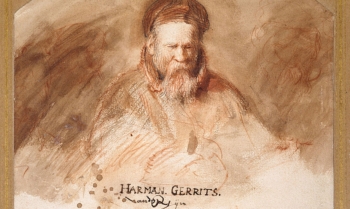Loving art between lockdowns
Hallett Independent’s Associate Director Clare Pardy reflects on the art exhibitions that she’s enjoyed in between lockdowns and the innovative ways museums and galleries have been making collections available during national restrictions.
Like many people, I seized the opportunity to visit both permanent collections and selected exhibitions in the brief Summer window between lockdowns. With more talk of museums struggling to survive the disastrous effects of the pandemic, in spite of what was seen as generous Government funding, these sorties now seem even more precious. While the lockdown brought out the extraordinary inventiveness of these beloved institutions to adapt, providing as they did, opportunities to view exhibitions, enjoy curatorial tours and lectures and participate in webinars, the limited re-opening underlined the very special experience of seeing an exhibition in situ.
When we were officially released at the beginning of July, I must admit to feeling a certain amount of anxiety about exposing myself to fellow exhibition goers, however well managed, and even the logistics of getting to the shows was intimidating. But I had been booked to see the Young Rembrandt at the Ashmolean earlier in the year so when it re-opened I was determined to go.
Through the years, I have seen Rembrandt themed in a number of exhibitions. Pitted against and compared with Caravaggio, in the Van Gogh museum back in 2006, the glorious late works at the National Gallery in 2016, the etchings in 2017 at Norwich Castle Museum, last year’s show at the Rijksmuseum and now, the Young Rembrandt at the Ashmolean. The very fact that he can be endlessly re-examined and subjected to continual curatorial scrutiny highlights for me, the depth and richness of his oeuvre and his unique place in art history.
The Ashmolean show was rather poignant not only because the young Dutch curator had worked so hard to bring it to fruition only to see it close within days of opening, but also what it revealed of Rembrandt’s early struggles. It showed rarely exhibited early works, starting in 1624, in which the draughtsmanship is quite clumsy and hesitant and where the faces are almost caricatured. It sees him working in tandem with Jan Lievens whom the curator describes as being the more naturally gifted artist, and how he becomes more assured, developing a repertoire of facial expressions through multiple studies of his own face. By the conclusion of the exhibition in 1634, the year he marries Saskia and is admitted to Amsterdam’s Painters Guild, he is in full possession of many of the skills and painterly techniques we associate with him. As well as, most endearingly for me, his full dressing up box of turbans, armour and rich velvets which will feature in so many of his most famous pictures.
On a brief visit to Cumbria at the end of September, we stopped off at the Hepworth, Wakefield which is another favourite museum, to see an exhibition devoted to Bill Brandt and Henry Moore. The two men met for the first time when Brandt was commissioned by Lilliput Magazine to photograph Moore in his studio. The exhibition charts the many parallels in the artists’ lives and work over five decades. Starting with Brandt’s recording of industrial and coal mining areas of Northern England as part of the Mass Observation project which mirrors Moore’s enormously touching studies of men in the Castleford mine where his father had worked. It moves on to their individual treatment of the underground shelters during the second world war. Tellingly, Moore was reluctant to record individuals in his studies feeling that it was too intrusive and so his extraordinarily beautiful renderings in chalk, wash and gouache have a haunting universality. Brandt on the other hand, records civilians as they slept with the objective, anthropological eye of the photographer. Interestingly, a portfolio of his works was sent to the U.S President Franklin D. Roosevelt to show the spirit of Londoners during the Blitz.
From these works, the show proceeds to explore both artists’ interest in the ancient sites of Avebury and Stonehenge, in found objects such as the weathered flotsam from beaches in Sussex and concluding with their individual takes on the human form. The curator is particularly interested in the way in which photography and sculpture overlap and inform each other and this is demonstrated in the juxtaposition of Brandt’s abstract female forms and Moore’s monumental sculptures in wood and bronze. One of the highlights for me was a marvellous tapestry which Moore commissioned forty years after the original work. Entitled ‘Row of Sleepers’ it is on an epic scale and is a fitting climax to a great show. For those who missed it, the exhibition is scheduled to be shown in the Sainsbury Centre in Norwich in the new year.
The last of my outings was a visit to the National Gallery and its much talked about Artemisia Gentileschi blockbuster. Inevitably, when exhibitions are so lauded, they can end up being a disappointment but this really exceeded all my expectations. These are pictures that command your attention with all their colour, drama and violence. Her skill as a painter is evident from the early age of 17 and there is an audacious operatic quality which some critics have compared to the films of Martin Scorsese. As there were only 30 works in total, the hang was generously spaced allowing each picture to be enjoyed on its own terms.
The circumstances of Gentileschi’s life are extraordinary even by the standards of her time and details of her rape and subsequent trial are illustrated with original documents which go some way to explain the particular stories and themes she repeatedly explores. In both Susannah and the Elders and Judith and Holofernes, we see her examining the dynamics of the relationship and bringing a freshness and immediacy to each interpretation, often tracing over one picture to create another – a practice much used by Caravaggio.
The other striking element was the way in which she used her own face again and again, posing as Susannah, Judith or Cleopatra as well as in the self portraits as St Catherine or simply in her real-life role as artist. Although the cost of models was a very real and practical reason for resorting to her own face and was, for this reason common practice, it brought to mind 20th Century women artists like Cindy Sherman and indeed Frida Kahlo whose life was similarly traumatic.
Hallett Independent is an art insurance broker for galleries, museums and private collectors. Get in touch to discuss your art insurance needs
Image caption: Portrait of an Old Man, Rembrandt © Ashmolean Museum




